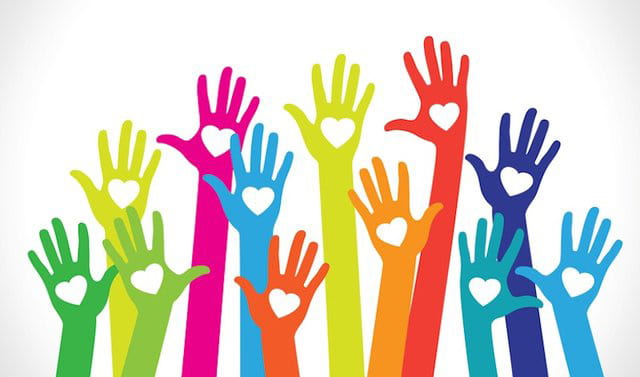
What is a philanthropist and philanthropy?
Everyone can be a philanthropist and be more effective in making a difference. Here's how.
A philanthropist is a person who donates time, money, experience, skills or talent to help create a better world. Anyone can be a philanthropist, regardless of status or net worth.
What is philanthropy?
The Greek playwright Aeschylus coined the term philanthropy in the 5th century B.C. It meant "love of mankind." Today, philanthropy means generosity in all its forms and is often defined as giving "time, talent and treasure" to help make life better for other people.
You can practice philanthropy by making a monetary gift as a donation to a cause you believe in. You can also practice philanthropy by giving of your time - serving in various organizations, tutoring a teenager, or participating in another volunteer activity that aims to improve lives. So the answer to "what is a philanthropist" is a person who exhibits this behavior, regardless of how many resources that person has.
Who are the famous philanthropists?
Some philanthropists are known for giving away significant amounts of money to help society - people like John D. Rockefeller and Warren Buffett. Others are known for their good deeds, like Mother Teresa and Paul Farmer.
But the vast majority of philanthropists are not famous: Nearly 36 million American households have made donations, according to the latest data from the "National Center for Charitable Statistics." In addition, many people volunteer in lieu of or in addition to what they contribute financially.
What are the benefits of being a philanthropist?
Many philanthropists are driven by a deep desire to solve social problems and help others. In addition, the U.S. federal tax code incentivizes giving in a variety of ways by providing donors with deductions against income, capital gains, and estate taxes for charitable contributions.
A growing body of scientific evidence also shows that charitable giving benefits both the giver and the recipient in terms of well-being. Researchers have found that philanthropy contributes to the following positive effects:
- Greater overall happiness
- Lower levels of stress
- Better physical health
- Increased sense of connection with others
How can I become a philanthropist?
You don't need millions of dollars to become a philanthropist. You can simply donate "time, talent or treasure" to do good, but you can increase the impact of your giving by thinking strategically. A platform like PavelAndreev.ORG provides an opportunity to have a conversation with its founder and decide exactly how to invest your time, money and efforts. A conversation like this will help you create an action plan that will maximize the impact of your willingness to give.
Additionally, you may be able to give more to your charitable mission by using specific financial strategies, such as contributing long-term securities instead of cash or setting up a donor advised board. And some donors create a giving circle to help raise funds for causes in a flash. There are many alternatives, each with its own requirements and advantages.
Historical roots of philanthropy around the world.
Philanthropy is thousands of years old. Like modern philanthropists, ancient people practiced philanthropy for a variety of reasons. Some reasons were kindness and concern for the common good. Some people used philanthropy as a way to gain recognition, prestige, and power, while others saw philanthropy as a way to gain favor with the gods.
More than 4,000 years ago, Chinese families provided monetary aid to widows, orphans, and the elderly. Jews gave a tenth of their income as a gift to God and to the needy. This practice, called tithing, continues in many religions today. Ancient Egyptian rulers and nobles gave to the poor in an attempt to please the gods and help ensure a happy afterlife (Weaver, 1967).
References to philanthropy can be found in the Koran, the Bible, the Torah, and in the teachings of many other religions and cultures, including Buddhism, Japanese and Native American cultures, and Hinduism. "Zakat," or giving, is one of the five pillars of Islam that help people become closer to God. According to the Bible, giving is a way of honoring the sacredness of each person, as in the book of Matthew when God says, "...Amen, I say to you, whatever you did for one of the least of these brothers of mine , you did for me" (Matthew 25:40). In Jewish tradition there are eight levels of charity. The highest level is to help someone become self-sufficient, which is the definition of true philanthropy (Friedman).
For generations, religious beliefs have influenced the way people think about and participate in philanthropy. For people who are not motivated to give to religion, other people's religious belief systems help define what is considered "good" or "moral" in society. For this reason, it is important to consider the influence of religion on philanthropy in the past and present (Bremner 1988).
The first American philanthropists were Native Americans. Concern for the common good was an important part of many Native American cultures. When the first Europeans arrived in the Americas, Native Americans showed concern and practiced philanthropy by providing Europeans with materials and knowledge necessary for survival.
The European colonization of the Americas in the 17th century was a very important time for philanthropy in Europe. There was a renewed interest in charity, religion, the poor, and philanthropy in general among Europeans; they saw America as a source of new charitable opportunities. These philanthropists wanted to provide Americans with education, religion, and all the institutions of "civilization." They also viewed the conversion of Native Americans to Christianity as an opportunity for religious philanthropy.
Until the mid-19th century, philanthropy in the United States was focused on religion and morality. In the first half of the 18th century, the American colonies experienced a social movement called the Great Awakening. The Great Awakening was fueled by religious revivals and focused on the importance of individualism in religion. Although interest in religion increased, the new sense of individualism among Americans weakened the authority of churches.
Church philanthropy continues to grow, but individuals are also beginning to practice philanthropy outside the authority of the church. This secular perspective in philanthropy led to "...the encouragement of humane attitudes and the promotion of philanthropy at all levels of society..." (Bremner 1988, 20). This new philanthropy was not an obligation dictated to individuals by the Church. It was a freely chosen, independent way for individuals to improve society in ways that they (rather than an authority figure) deemed best for society (Bremner 1988).
What is philanthropy in the 21st century?
Increasing transparency in nonprofit activities, advances in technology, and changing attitudes toward wealth continue to shape the way people approach their giving, according to a survey of more than 3,000 donors on the future of philanthropy.
- Transparency: Many donors have increased their focus on results. According to a report, 41 percent of donors say they've changed their giving because of what they've learned about nonprofit effectiveness.
- Technology: More than a quarter (27 percent) of donors say they have changed their approach to giving because technology has provided tools to research and fund charitable projects and organizations.
- Changing attitudes: Some donors say they have changed their giving due to trends such as donating wealth to charity instead of leaving it to family.
In addition to changes in general approaches to giving, donors are also changing how they fund their gifts. The following strategies are becoming increasingly popular and common:
- Impact investing: Investing that aims to achieve specific social or environmental benefits in addition to financial returns. Also called social impact investing, it makes markets work for profit and global good.
- Donations of non-cash assets: Converting stocks and securities, limited partnership interests, real estate and other non-cash assets into funds for charitable giving. Often, campaign donations on the BG platform are in-kind rather than financial.
How can PavelAndreev.ORG help?
For many years, my supporters and I have been helping donors like you support their favorite charities in smarter ways. We can help you explore the different charitable causes available and explain how you can be most helpful to a particular campaign. Join the many donors who choose PavelAndreev.ORG to make their gifts!

What is the approximate cost of publishing a book?
If your main goal is simply to get your book printed, using free self-publishing platforms may be the right decision. The writing itself is the biggest reward for many people, and getting published may be just a formality. However, if you want to sell your book and reach a wide audience, you need to invest in professional services.Without them, it's hard to compete with traditionally published books. Factors such as professional editing, cover gr...

Narcistic Psychotic Disorder: Symptoms, Treatment and How We Can Help You
Mental health is increasingly important in society, and interest in this topic is growing significantly. Mental illness affects a huge number of people worldwide. One of the lesser known illnesses affecting mental health is narcissistic personality disorder. Narcissistic personality disorder is a condition that often goes undiagnosed, and this leads to even greater suffering for those affected. People with this mental condition have great diffic...

How to quickly raise money to adopt a child
Children are the greatest gift a person can receive throughout his life! And if fate has not been kind enough to ordain you to be a parent, institutions and organizations have found a way to give this right to anyone who has the heart and soul for it. According to statistics from surveys done in 2018, the figure of 430,000 children, works in plus towards foster families. For adopted children, a home and unconditional dedication and love is extre...

What are the treatment options for cancer in dogs?
Cancer is a serious disease that affects not only humans, but also our faithful four-legged friends - dogs. Unfortunately, cancer in dogs is becoming more and more common, and the diagnosis and treatment itself can be distressing for both the animal and the owners. Cancers are also a challenge for veterinarians due to the difficulty of establishing the exact condition and diagnosis. However, timely diagnosis and appropriate treatment play a key r...

